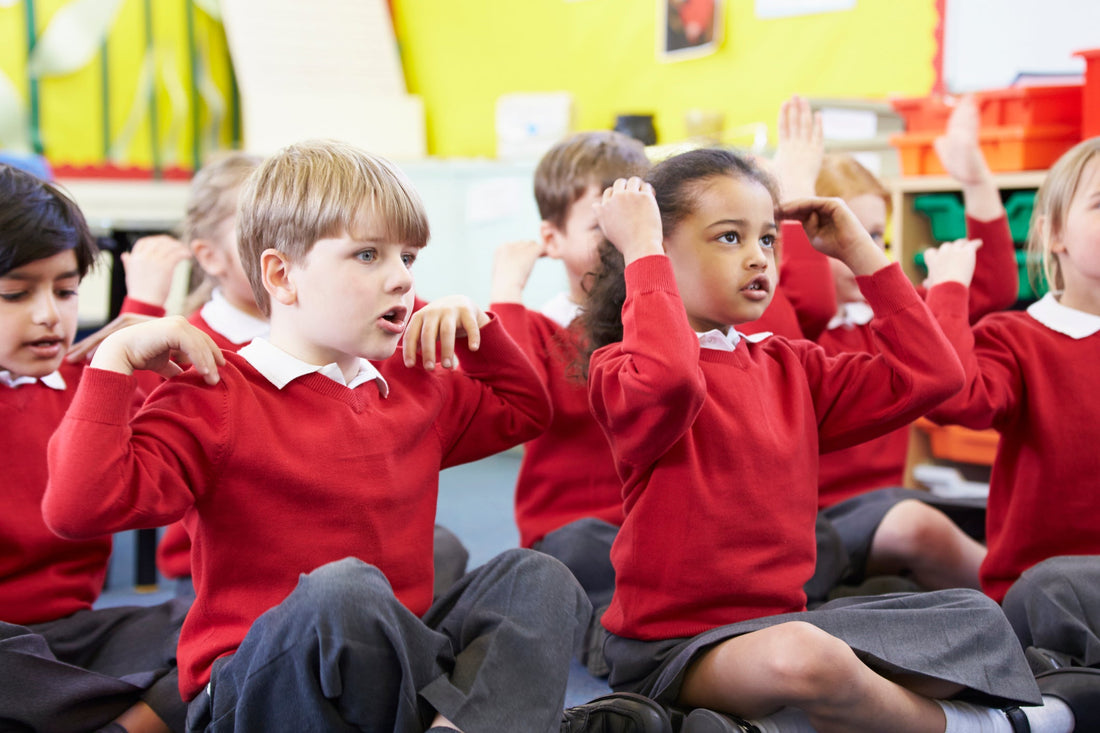Nothing lends itself to rhythmical movement activities like the times tables. The times tables, after all, are fundamentally rhythmical and active in nature. Hence, it is beneficial for children to learn them in like manner, as it accords with their developmental needs.
Rhythmical counting is begun in first grade. Here the children count each step as they march up to 24 or 36.
After they have matched stepping with counting (“make every step count”), they can write out the numbers as neatly as possible. After establishing facility at this, they again count their steps, but whisper the odd numbers, emphasizing the even numbers, by stamping, clapping, or doing both together. Now go back to the paper and circle the even numbers, the 2s. Threes can be approached by taking two short steps and then leaping to a straddle position on 3. Hence 1 2 3, 4 5 6, 7 8 9, 10 11 12. A triangle can be drawn around every third number. It will be seen that some numbers have more than one symbol around them. To reinforce 4s, take 2s as the counting numbers and stamp on the second one. Hence, 2 4, 6 8, 10 12, and so on. Continue until you have learned all 12 numbers for 1s-5s. This is usually sufficient for first grade. Mastering rhythmic counting lays the basis for later learning of the times tables. Beyond this, it develops kinesthetic awareness and doesn’t fatigue them. It energizes them!
Passport to Mathematics
Rhythmic counting continues in 2nd grade. Every other 3 becomes the 6-table; every other 4 becomes the 8-table, and so on. This is treated in depth in story form in my book, Multiplicando.
Challenge the children to come up with things they can do physically in time with the rhythmic counting of numbers. The most basic is a modified jumping jack. There are 4 positions: 1)spread eagle; 2) arms overhead, feet together; 3) back to spread eagle; 4) arms at sides, feet together. Three complete sets gets you to 12 times. Other activities that can be done rhythmically include: regular jumping jacks, ball bouncing, jumping rope, vaulting, passing beanbags hand to hand, climbing stairs, passing a ball under one leg and then the other, and even doing cartwheels. The list is endless. A log can be kept, The Passport to Mathematics. Devote one page to each number, and register activities done while counting.
The 48 Club
One activity that has worked particularly well in many situations, both as a warmup and as an interlude from “head work”, is called The 48 Club. The children count in unison, while stepping up onto their chairs, and then back down again, clapping on the 4s. Thus, they step up with one foot on 1, and with the second foot on 2; step down with one foot on 3, step down with the other, and clap on 4. And so on to 48. Once a rhythm is established, whisper or omit all numbers but the 4s. This activity may also be done on a step, a low wall, a stump, etc. When a child can count smoothly and make every step count, they have joined the 48 Club.

